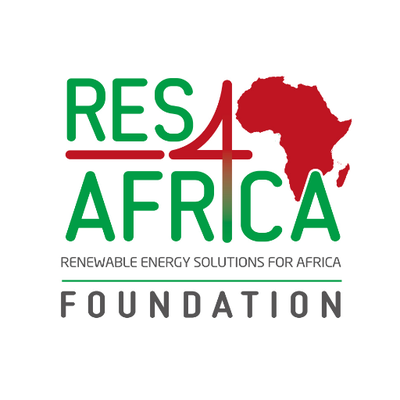Closing the energy access gap in Africa will require renewables
#CriticalThinking
The energy access gap in Africa is widening. Following the current trajectory, population growth will outpace the ongoing electrification effort. In other words, by 2030 the amount of people without access to electricity will increase. On top of that, even in those parts of Africa where electricity service is provided, it tends to not be fully reliable, owing to high supply costs and low revenues. Outages and load shedding are estimated to shave some 2% off Africa’s GDP annually in terms of business disruption and foregone profits.
Commission President Ursula von der Leyen has stressed the importance of Africa in the EU’s new political cycle, proposing a comprehensive strategy for the continent, which is seen as “more than just a neighbour for the EU” and its “most natural partner”.
Facilitating energy access for all does more than just light people’s private homes – it creates the development opportunities that von der Leyen champions. It can power industry in urban areas and agribusiness in rural areas, providing much-needed jobs.
The pipeline of renewable energy projects under development in Africa is scarce, volatile, and uncertain
While the renewable energy potential of Africa is unquestionable, there is not enough generation capacity. Renewables today constitute the most rapid, cost-effective way to provide electricity for the African grid. At the same time, they enable the continent to leapfrog polluting technologies and contribute to global climate targets.
However, despite their market potential, the pipeline of renewable energy projects under development in Africa is scarce, volatile, and uncertain. This is due to a combination of factors, including inadequate and unreliable long-term planning, limited capacity of the grid to absorb additional generation, ineffective legal and regulatory frameworks, as well as challenges related to financing.
All these factors result in an environment in which returns on investments are uncertain. So, what will it take to amplify the pipeline of renewable energy projects in Africa? A comprehensive set of measures – including but not limited to financial de-risking – that addresses the various barriers that investors face.
A multitude of EU schemes supporting renewable energy investments in Africa already exist. A preparatory RES4Africa study led by PwC in 2018 to assess market gaps identified more than 75 EU financing instruments. An in-depth analysis of 17 led to the following findings.
Investors do not have sufficient support in the final stages of the project cycle
Firstly, existing EU renewable energy support schemes are highly fragmented. Of the 17 instruments deemed most relevant, less than half provide a full financing package or at least one insurance instrument, only 29% are technology neutral, and less than a third cover all African countries.
Secondly, investors do not have sufficient support in the final stages of the project cycle. All 17 instruments offer some form of support in the early project stages, such as feasibility studies or capacity building. Meanwhile, plenty of room for improvement remains in the late project phases including contract negotiation, preparation of project documents, and implementation of a tender process.
Thirdly, there are a number of important investment barriers that are chronically unaddressed: only a third of the instruments cover barriers related to dispute resolution, capital transfer, currency convertibility, inflation, construction flaws, tax regime, or force majeure.
Another key takeaway is that to stimulate investments in Africa, financing is not enough. An integrated package that combines policies, regulations, financing and de-risking is needed. There is no lack of financing available in the market, however investors have difficulty tapping into these financing pools due to investment barriers.
With the right toolkit, renewables will help close the energy gap that is so pressing across the continent today
Last but not least, a new instrument is needed to enable building on best practices and to enhance the effectiveness of existing instruments. While two programmes – the EU External Investment Plan (EIP) and the World Bank Scaling Solar (SS) – offer clear best practices, there is room to enhance their effectiveness by further expanding and deepening their coverage of various investment risks.
Multi-stakeholder initiatives can help strengthen existing best practices and better address the African risk environment. Such initiatives should bring actors from all parts of the renewable energy value chain, ranging from the world of finance to that of manufacturers, independent power producers and academia. They must also aim to be comprehensive by offering technical assistance, capacity building, policy dialogue and general advisory services in addition to the more standard elements of financing and financial de-risking tools. This is something that RES4Africa’s renewAfrica Initiative, which seeks to catalyse renewable energy investments, strives to accomplish.
With the right toolkit, renewables will help close the energy gap that is so pressing across the continent today.
Stay informed
